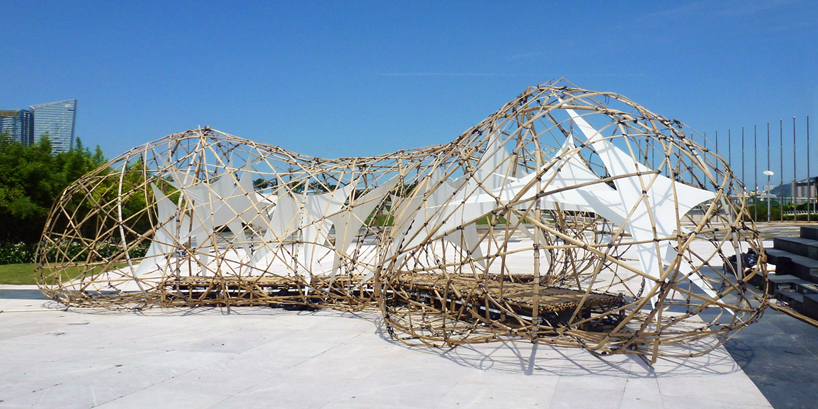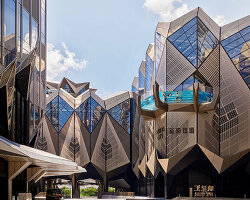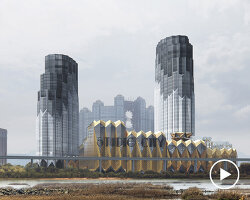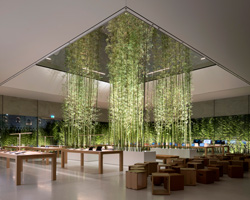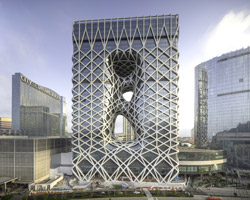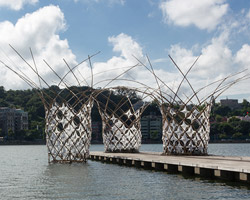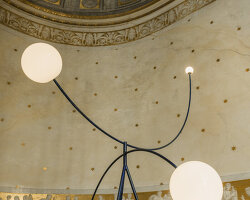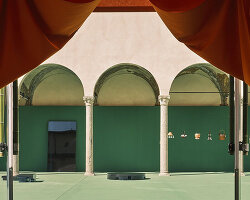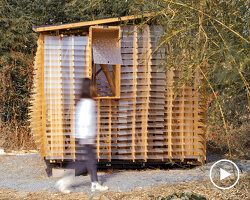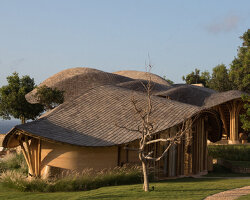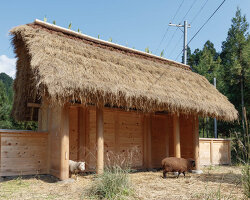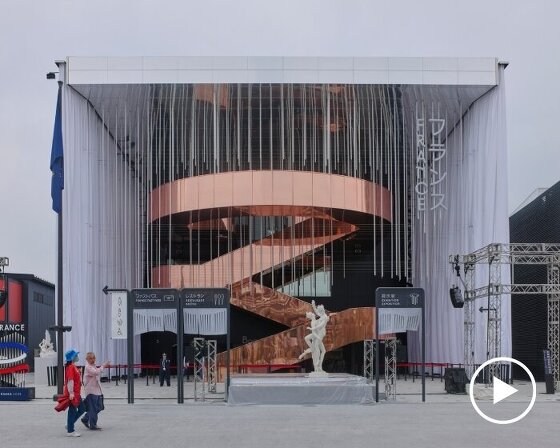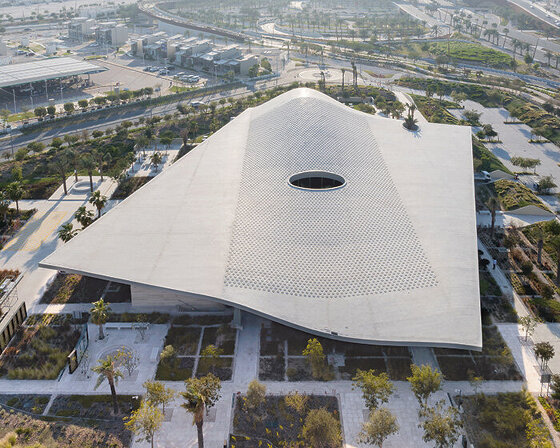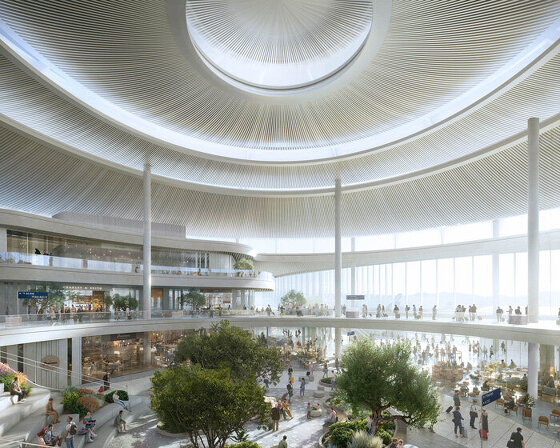designed and built by university of st. joseph in macau by third-year undergraduate architecture students, ‘the pulse pavilion’ is conceived as a temporary structure that stands at plaza sai van, adjacent to macau tower. it is an inhabitable sculpture, a parametrically generated organic lattice structure created from split bamboo rods, interwoven fabric panels, and an interactive LED lighting system. in addition to a range of spectacular pre-programmed light-shows, the bamboo lattice is lined with motion sensors that cause the led lights to change in color and intensity as people move around and through the pavilion.
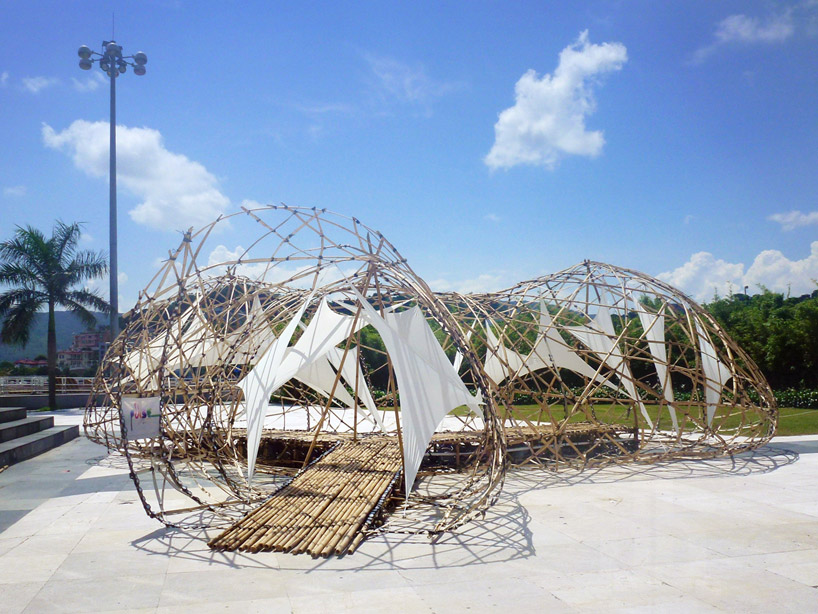
perspective of pavilion entrance
the students designed the pavilion using an array of digital and physical models. for the actual construction, they were assisted by local craftsmen with expertise in bamboo structures. as a combination of advanced parametric software techniques with traditional construction methods and materials, the pavilion is intended to reinvigorate and extend the local macau building culture. at the same time, it responds to the local casino culture of iconic architectural forms and dynamic lighting effects that define macau’s contemporary visual identity.
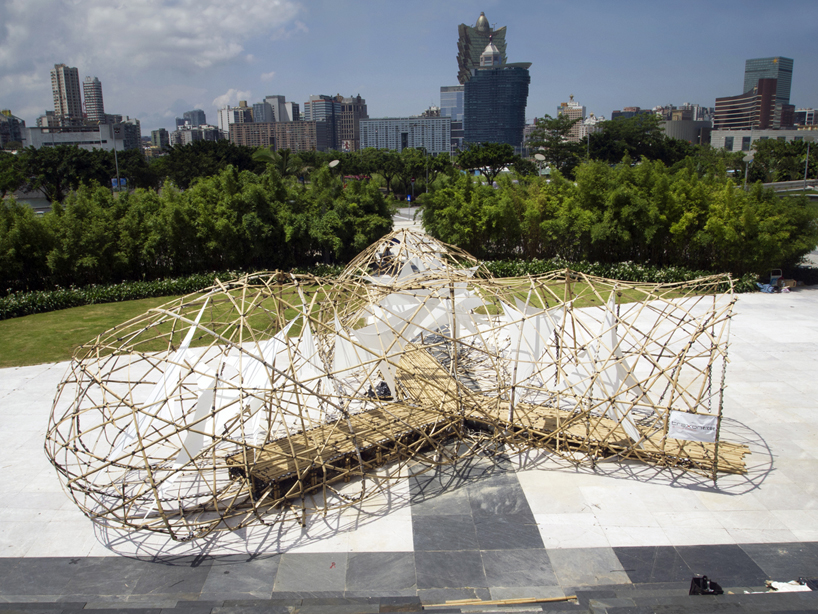
pulse pavilion with macau skyline

split bamboo woven into a continuous metaball surface
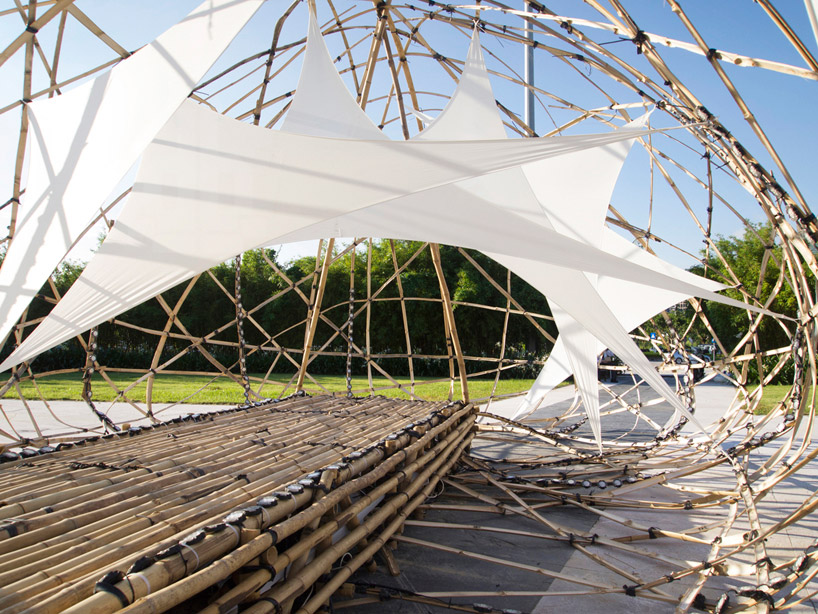
suspended stretch fabric

suspended stretch fabric – detail

integrated LED lighting

interactive LED lighting

illuminated stretch fabric

pavilion visitors at night
project information:
location: plaza sai van, macau sar, china.
design: third-year undergraduate architecture students from the university of st joseph, led by guest professors kristof crolla and dannes kok.
dates: on display from june 1-10 2013.
support: laboratory for explorative architecture & design ltd. (lead), traxon technologies (lighting), wing yick scaffolders (bamboo), wings design production ltd. (fabric), macau foundation, macau tower.
designboom has received this project from our ‘DIY submissions‘ feature, where we welcome our readers to submit their own work for publication. see more project submissions from our readers here.
